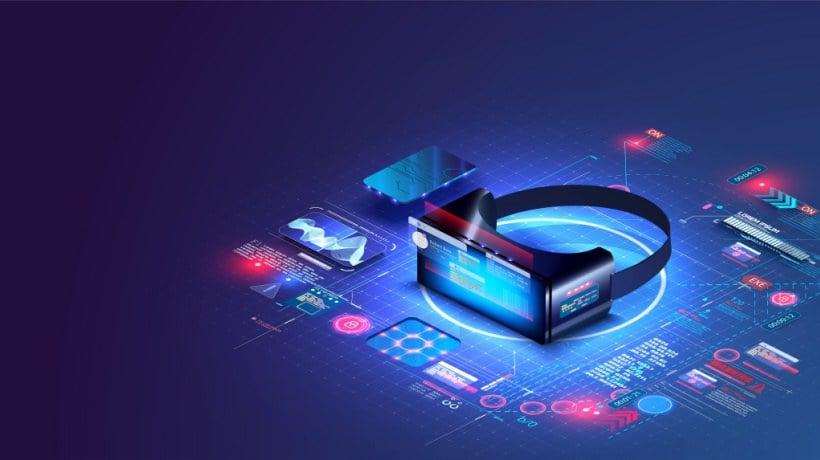Unlocking the Future of Education: How VR/AR drive Immersive learning Experiences
The landscape of education is rapidly transforming,thanks to advancements in Virtual Reality (VR) and Augmented Reality (AR). As schools and universities embrace digital learning tools, VR and AR are paving the way for immersive learning experiences that engage students like never before. In this thorough guide, we’ll explore how VR and AR are revolutionizing classrooms, highlight key benefits, showcase real-world case studies, and provide practical tips for educators aiming to unlock the full potential of this technology.
What Are VR and AR in Education?
Virtual Reality (VR) uses headsets and digital environments to entirely immerse users in a simulated world, while Augmented Reality (AR) overlays digital details or visuals onto the real-world environment using smartphones, tablets, or AR glasses.
- VR in Education: Creates a fully simulated, interactive 3D environment for learners, such as virtual science labs, ancient re-enactments, or anatomy explorations.
- AR in Education: Enhances real-world objects or textbooks with additional digital content,like 3D models,videos,or interactive quizzes.
Both technologies are now being integrated into curriculums to provide deeper,more engaging learning experiences,sometimes referred to as immersive education.
The Benefits of Immersive Learning with VR/AR
- Enhanced Engagement: Interactive 3D environments keep students interested and motivated.
- Deeper Understanding: Complex concepts can be visualized and experienced firsthand, aiding memory retention and comprehension.
- Safe Simulations: VR allows for practical, hands-on experience in a safe, controlled environment—crucial for perilous or expensive experiments.
- Personalized Learning: VR/AR platforms can adapt to individual learning styles and speeds.
- Collaboration & social Skills: Multi-user VR applications foster teamwork and communication—even remotely.
- Accessible Experiences: Students can virtually travel the globe, visit historical landmarks, or experience natural wonders—regardless of their physical location or school budget.
Did you know?
According to the latest statistics from Statista, the global AR & VR market in education is expected to surpass $25 billion by 2027, emphasizing the growing importance of immersive learning experiences in classrooms worldwide.
Real-World Case Studies: VR/AR in Action
Medical Training at Case western Reserve University
Students at Case Western use Microsoft HoloLens (an AR headset) and the “HoloAnatomy” app to study 3D anatomy. Instead of dissecting cadavers, learners interact with life-sized holograms, walk around organs, and cross-section different body parts—making medical training accessible, engaging, and repeatable.
History Lessons at The World of Comenius Project
European schools participating in this project use VR headsets to take virtual field trips to Ancient Rome, World War I battlefields, and more. Students don’t just read about history; they walk through ancient streets and witness historical events, enriching their understanding through active participation.
STEM Education with Google Expeditions
Google Expeditions enables millions of students to explore underwater ecosystems,the surface of Mars,or the human circulatory system through affordable VR viewers. Teachers guide learners through pre-designed virtual “expeditions,” making science interactive and fun.
Practical Tips for Integrating VR/AR into the Classroom
- Start Small: Begin with existing apps or pre-built VR/AR lessons before exploring custom content creation.
- Check Compatibility: Ensure yoru devices (tablets, smartphones, or VR headsets) meet the technical requirements of your chosen apps.
- Pair with the Curriculum: Align immersive experiences with your learning objectives for maximum impact.
- Address Equity and Accessibility: Consider device-sharing, mobile-based AR, or grant funding to make immersive learning accessible to all students.
- Provide Guidance: Supplement VR/AR exploration with teacher-led discussions, assignments, or group projects.
- Monitor and Evaluate: Gather student feedback and assess how immersive technologies impact outcomes and engagement.
First-Hand Experiences: voices from the Classroom
”After introducing VR field trips, I’ve seen a remarkable increase in my students’ curiosity and participation. Students who struggled with traditional lessons are now eager to contribute and ask questions.”
— Jane Mitchell, 5th-grade Science Teacher
“Using AR to visualize complex chemistry reactions was a game-changer. My students quickly grasped challenging concepts that would normally take weeks to master.”
— Dr. Henry Wu, High School Chemistry Professor
Challenges and Considerations
- Cost: VR headsets and AR devices can be expensive, but prices are dropping and mobile-based solutions make adoption easier.
- Teacher Training: Professional development is needed to integrate these new tools effectively into lesson plans.
- Classroom Management: Monitoring and guiding students in immersive environments requires new strategies and clear rules.
- Content Quality: not all VR/AR resources are created equal—always vet educational content for accuracy and relevance.
The Future of VR and AR in Education
As technology advances, the possibilities for immersive education will continue to expand. Future trends may include:
- AI-powered adaptive learning environments that respond in real-time to each student’s needs.
- Multi-user virtual classrooms where students from around the world collaborate on projects.
- Mixed Reality (MR), combining both VR and AR, for an even richer blend of real and simulated elements.
With the continuous innovation in VR/AR technology, the educational experience will become more personalized, interactive, and accessible than ever before.
Conclusion: Embracing immersive Learning for a Brighter Tomorrow
VR and AR are not just trends—they represent a paradigm shift in the way we teach and learn. By unlocking powerful immersive learning experiences, these technologies have the potential to make education more engaging, equitable, and effective. Whether you’re an educator, administrator, or student, now is the perfect time to explore how VR and AR can enhance your classroom and prepare learners for the future.
Are you ready to unlock the future of education? Dive into the world of VR and AR today and reimagine what’s possible for your students!

